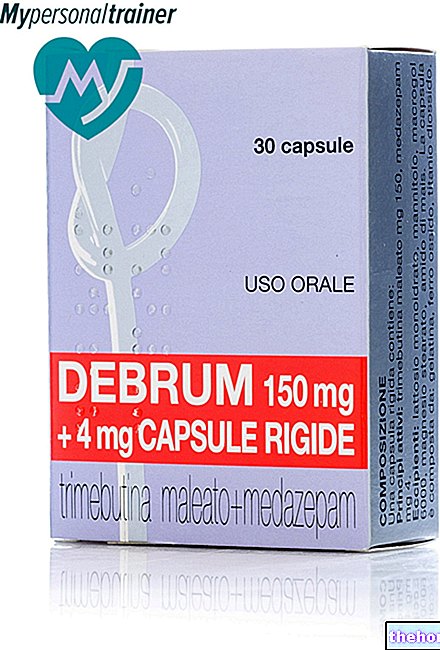Active ingredients: Imecromone
CANTABILIN 300 mg coated tablets
Why is Cantabilin used? What is it for?
Cantabilin contains the active substance imecromone, which is part of a group of medicines used for biliary therapy. It is used to treat disorders of the gallbladder and bile production.
Cantabilin is used for the treatment of:
- impaired flow of bile from the gallbladder (biliary dyskinesia)
- indigestion (dyspepsia) caused by impaired bile production
- spasms of the biliary tract and the valve that regulates the outflow of bile (sphincter of Oddi)
Cantabilin is also used as an adjunct for the treatment of:
- inflammation of the gallbladder
- gallstones (gallbladder lithiasis)
- after surgical removal of the gallbladder
- mild to moderate problems with liver function (mild to moderate liver failure).
Contraindications When Cantabilin should not be used
if you are allergic to hymecromone or any of the other ingredients of this medicine
Precautions for use What you need to know before taking Cantabilin
Talk to your doctor or pharmacist before taking Cantabilin if you have:
- a "biliary obstruction
- severe liver function problems.
Interactions Which drugs or foods may change the effect of Cantabilin
Tell your doctor or pharmacist if you are taking, have recently taken or might take any other medicines.
Warnings It is important to know that:
Pregnancy, breastfeeding and fertility
If you are pregnant or breast-feeding, think you may be pregnant or are planning to have a baby, ask your doctor or pharmacist for advice before taking this medicine.
The effects of Cantabilin on the fetus or breast-fed infant are unknown, therefore the use of Cantabilin during pregnancy or breastfeeding is not recommended.
Driving and using machines
Cantabilin does not affect the ability to drive or use machines.
Cantabilin contains sunset yellow, sucrose and glucose.
The product contains:
- sunset yellow, a coloring agent that can cause allergic reactions
- liquid glucose and sucrose; if you have been told by your doctor that you have an intolerance to some sugars, contact your doctor before taking this medicinal product.
Dose, Method and Time of Administration How to use Cantabilin: Posology
Always take this medicine exactly as described in this leaflet or as directed by your doctor or pharmacist. If in doubt, consult your doctor or pharmacist. The recommended dose is 1 - 2 tablets two or three times a day. Do not exceed the recommended daily dose.
If you forget to take Cantabilin
Do not take a double dose to make up for a forgotten dose.
If you have any further questions on the use of this medicine, ask your doctor or pharmacist.
Overdose What to do if you have taken too much Cantabilin
If you or someone else has accidentally taken too many Cantabilin tablets, tell your doctor or go to the nearest hospital, taking the pack with you if possible.
Side Effects What are the side effects of Cantabilin
Like all medicines, this medicine can cause side effects, although not everybody gets them.
Common side effects (may affect between 1 and 10 in 100 people):
- diarrhea
Not known (frequency cannot be estimated from the available data):
- anaphylactic reactions, including hives, itching, difficulty in breathing, swelling of the face, lips, throat or tongue (edema), which can progress to anaphylactic shock.
Reporting of side effects
If you get any side effects, talk to your doctor or pharmacist. This includes any possible side effects not listed in this leaflet. You can also report side effects directly via the national reporting system www.agenziafarmaco.it/it/responsabili. By reporting side effects you can help provide more information on the safety of this medicine.
Expiry and Retention
Keep this medicine out of the sight and reach of children.
Do not use this medicine after the expiry date which is stated on the carton after EXP. The expiry date refers to the last day of that month.
Do not throw any medicines via wastewater or household waste. Ask your pharmacist how to throw away medicines you no longer use. This will help protect the environment.
Other Information
What Cantabilin contains
The active ingredient is imecromone; each tablet contains 300 mg
The other ingredients are:
corn starch, microcrystalline cellulose, gum arabic, precipitated silica, magnesium stearate, talc, dextrin, liquid glucose, sucrose, erythrosine (E 127), sunset yellow (E 110), carnauba wax. See end of section 2 for more information on sunset yellow, sucrose and glucose.
What Cantabilin looks like and contents of the pack
Cantabilin coated tablets are packed in blisters of 30 or 40 tablets. Not all pack sizes may be marketed.
Source Package Leaflet: AIFA (Italian Medicines Agency). Content published in January 2016. The information present may not be up-to-date.
To have access to the most up-to-date version, it is advisable to access the AIFA (Italian Medicines Agency) website. Disclaimer and useful information.
01.0 NAME OF THE MEDICINAL PRODUCT
CANTABILIN 30 MG COATED TABLETS
02.0 QUALITATIVE AND QUANTITATIVE COMPOSITION
One coated tablet contains: active principle: imecromone 300 mg.
Excipients: liquid glucose, sunset yellow (E110)
For the full list of excipients, see section 6.1
03.0 PHARMACEUTICAL FORM
Coated tablet
04.0 CLINICAL INFORMATION
04.1 Therapeutic indications
Biliary dyskinesias. Dyspepsia secondary to insufficient biligenetic function. Spasm of Oddi's sphincter and biliary tract. Adjuvant in gallbladder lithiasis, cholecystitis and after-effects of cholecystectomy. Adjuvant in small and medium hepatic insufficiency.
04.2 Posology and method of administration
1-2 coated tablets 2-3 times a day.
04.3 Contraindications
Hypersensitivity to the active substance or to any of the excipients.
04.4 Special warnings and appropriate precautions for use
Do not use in case of obstruction of the bile ducts and in case of severe hepatic insufficiency. The medicine contains sunset yellow, an azo dye which may cause allergic reactions.
Patients with rare glucose-galactose malabsorption problems should not take this medicine.
04.5 Interactions with other medicinal products and other forms of interaction
The extensive use of the product did not reveal particular interactions with other drugs.
04.6 Pregnancy and breastfeeding
Data from the use of Cantabilin in pregnant women are not available. Animal studies do not indicate teratogenic effects.
As a precautionary measure, it is preferable to avoid the use of Cantabilin during pregnancy.
It is unknown whether imecromone or its metabolites are excreted in human milk.
04.7 Effects on ability to drive and use machines
Cantabilin does not affect the ability to drive or use machines.
04.8 Undesirable effects
Within each frequency class, undesirable effects are listed in order of decreasing severity. The frequency is defined as: Very common ≥ 1/10, Common ≥1 / 100, Uncommon ≥ 1 / .1000 and
Gastrointestinal disorders
Common: diarrhea
Disorders of the immune system
Not Known: Anaphylactic reactions, including urticaria, pruritus, dyspnoea, Quicke's edema and hypotension which may progress to anaphylactic shock.
Reporting of suspected adverse reactions
Reporting of suspected adverse reactions occurring after authorization of the medicinal product is important as it allows continuous monitoring of the benefit / risk balance of the medicinal product. Healthcare professionals are asked to report any suspected adverse reactions via the national reporting system. "address: http://www.agenziafarmaco.gov.it/it/responsabili
04.9 Overdose
No cases of overdose have been reported
05.0 PHARMACOLOGICAL PROPERTIES
05.1 Pharmacodynamic properties
ATC code: A05AX02
The hymecromone is a natural active principle reproduced by original synthesis. By definition it is a true choleretic, but it is also endowed with spasmolytic activity on the gallbladder and more particularly on the sphincter of Oddi, while it has no spasmolytic effect on other organs. restores the biliary function in its entirety thanks to a double favorable mode of action:
- Elective antispastic action on the colicyst and on the sphincter of Oddi without an atropinic effect.
- gentle and protracted choleretic action without cholagogue effect.
The antispastic action at the level of the sphincter of Oddi and the gallbladder and the choleretic action have also been confirmed in man, during surgery on the biliary tract.
05.2 Pharmacokinetic properties
Imecromone is absorbed fairly rapidly after oral administration, reaching the peak serum concentration within 2 hours. Distinctly hepatophilic, it concentrates in the liver, where it binds to glucuronic acids; it is excreted with the bile and is subsequently reabsorbed in the liver. "small intestine, creating an enterohepatic circle. The drug is excreted mainly by the urinary route.
05.3 Preclinical safety data
The toxicological tests on the animal did not show any toxic phenomena, growth or behavioral abnormalities, as well as no teratogenicity or fetal toxicity. In fact, the acute toxicity was extremely low: the LD50, for oral administration, is 7593 mg / Kg in the mouse and 6220 mg / Kg in the rat. The prolonged oral administration, in the dog of 800-2400 mg / Kg / day for 3 months and in the rat 400-1000 mg / Kg / day for 4 months, showed the "excellent tolerability of the drug.
06.0 PHARMACEUTICAL INFORMATION
06.1 Excipients
Corn starch, microcrystalline cellulose, gum arabic, precipitated silica, magnesium stearate, talc, dextrin, carnauba wax, sucrose, liquid glucose, erythrosine (E 127), sunset yellow (E 110).
06.2 Incompatibility
There are no known chemical-physical incompatibilities of imecromone with other compounds.
06.3 Period of validity
5 years.
06.4 Special precautions for storage
This medicinal product does not require any special storage conditions.
06.5 Nature of the immediate packaging and contents of the package
Blister in P.V.C. and aluminum
30 and 40 coated tablets of 300 mg
06.6 Instructions for use and handling
None.
07.0 MARKETING AUTHORIZATION HOLDER
GR & UUml; NENTHAL ITALIA S.r.l. - Via Carlo Bo, 11 - 20143 Milan
08.0 MARKETING AUTHORIZATION NUMBER
"300 mg coated tablets", 30 coated tablets - A.I.C. n. 021300013
"300 mg coated tablets", 40 coated tablets - A.I.C. n. 021300025
09.0 DATE OF FIRST AUTHORIZATION OR RENEWAL OF THE AUTHORIZATION
First registration: June 30, 1970
AIC renewal: May 2012
10.0 DATE OF REVISION OF THE TEXT
July 2015



























